lest we forget
Krakow, Poland
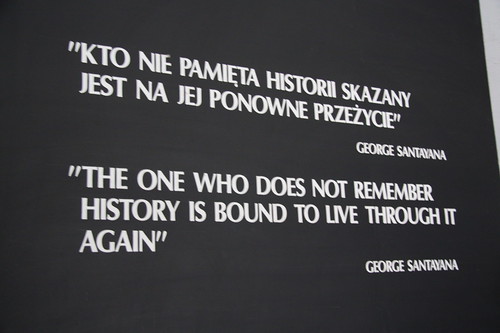
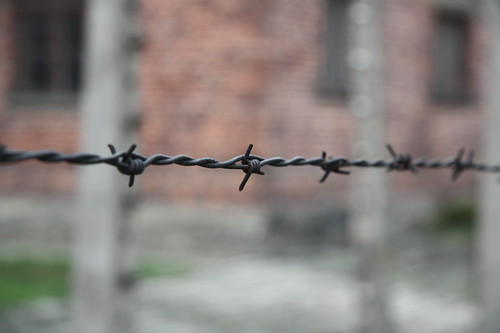
The first time we visited Auschwitz, it was the middle of winter. Snow covered the ground and fell on to our woollen coats; we shivered, wondering how *anyone* survived in a pair of striped pyjamas, not that many did.
The scene was a striking black and white, made perhaps even more stunning by the fact that we were the only people there, the only ones being stared at by the thousands of pairs of eyes lining the walls, identification photographs of prisoners who perished.
Today was a bit different. Hundreds and hundreds were there to pay their respects, to bear witness, to acknowledge the gruesome reality. Tour guides escorted most of them, hurried their headset-wearing charges through the exhibits. Modern signposts obstructed the minimalist photos we were able to take twenty years ago. There’s a movie to watch now (although we elected not to, expecting it to be unsuitable for most of our kids) and there are more explanations in English. A poignant addition is the largescale reproduction of artwork by prison survivors. There was no snow – just trees resplendent in brilliant bright yellow tinged with red.
But still the piercing gaze of the murdered follows you up and down the halls of cold constructed-by-prisoners brick buildings.
At Auschwitz the brutality to *real people* astounds. The tortures, the photographs of mere skin-and-bones freed at the end of the war, the execution wall, the medical trials, the evidence of starvation and slavery – it’s all horrific. The rooms full of leather suitcases and wicker baskets, enamel bowls and cooking pots, wooden toothbrushes, hairbrushes, shaving brushes and scrubbing brushes, round-rimmed spectacles, shoes, children’s clothes, Jewish prayer shawls, prosthetic limbs…..they all make those people REAL.
At Birkenau, another camp just 3km away (we walk there), the expanse is what amazes. Initially it looks big, but then as you start wandering around, you realise you had not even seen most of it when you first took it in; the “barracks”, or rather, what is left of them, stretch on and on and on and on and on. The number 1,100,000 killed here starts to fill with meaning.
Sheer evil.

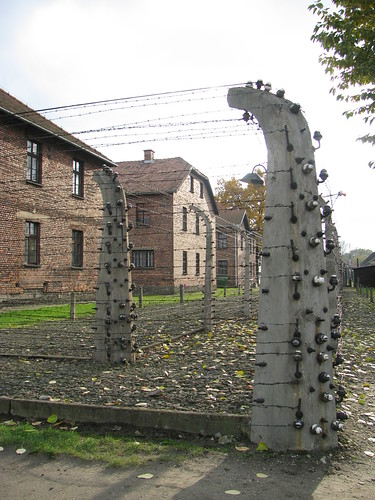
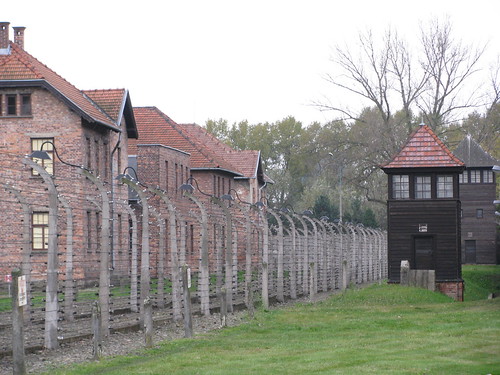

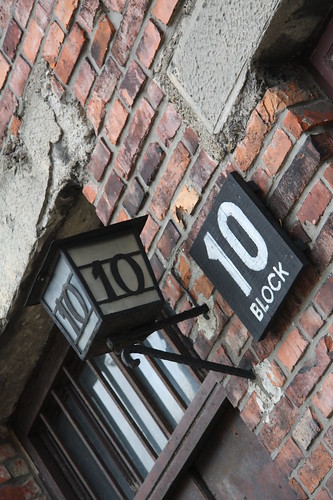
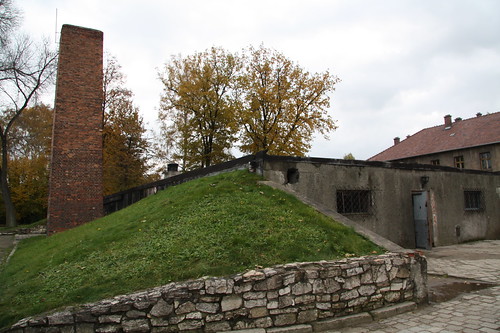
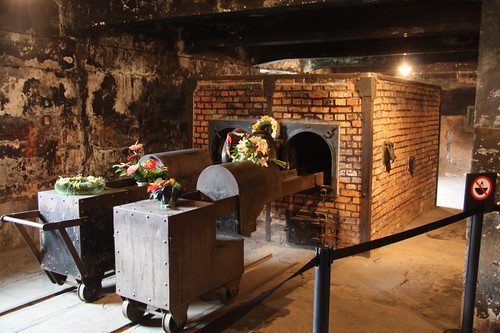
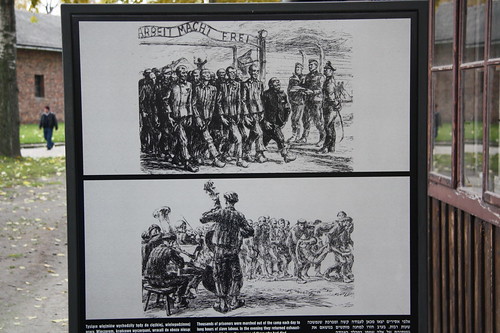

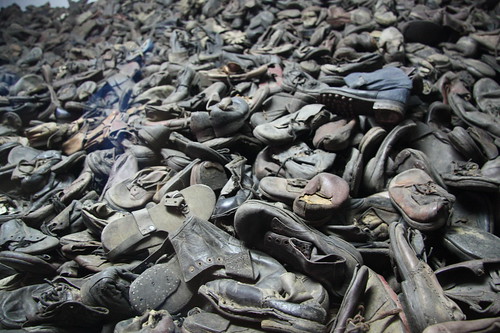
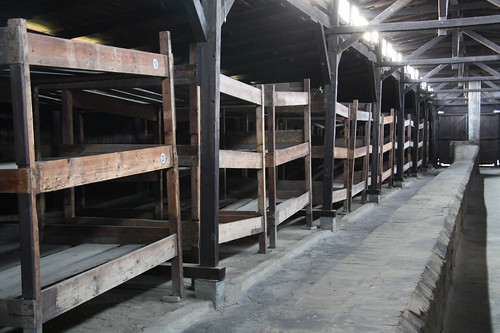
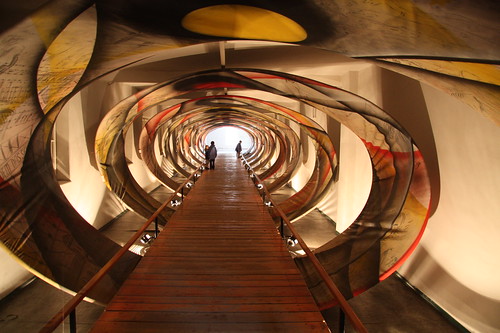

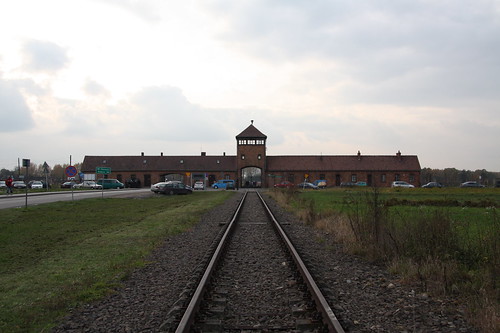
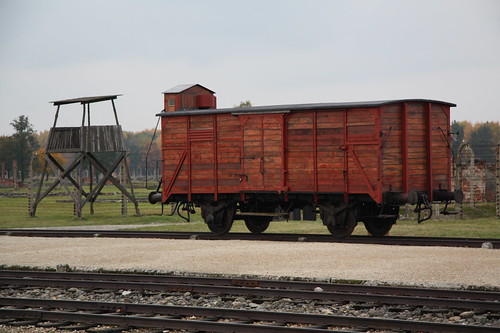
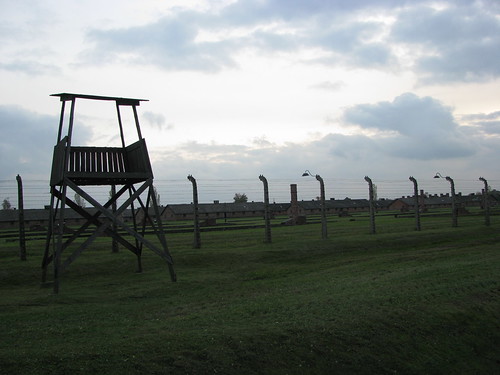
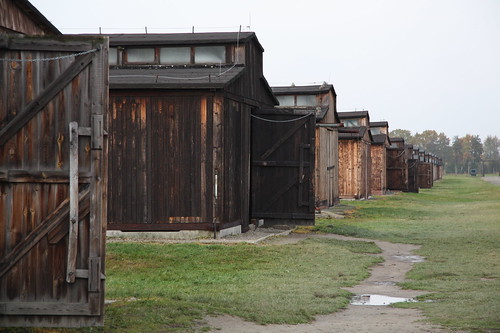
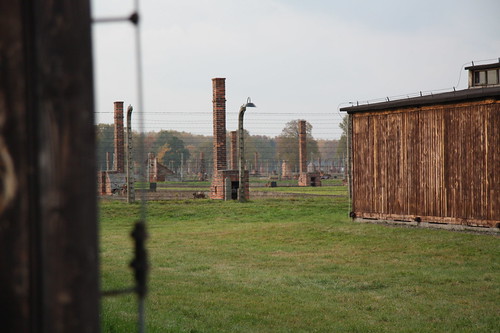
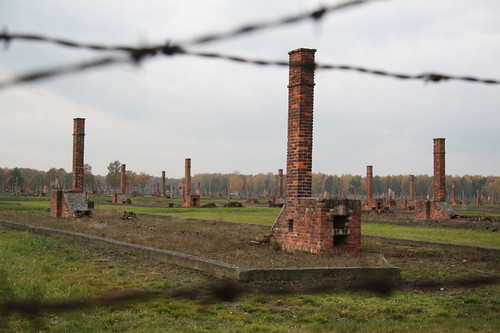
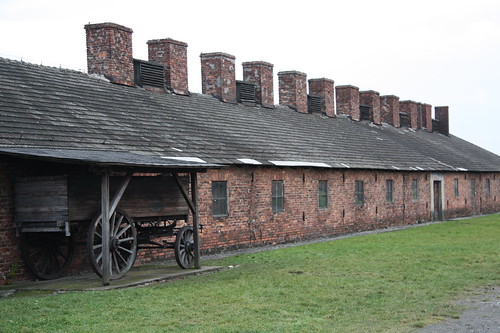
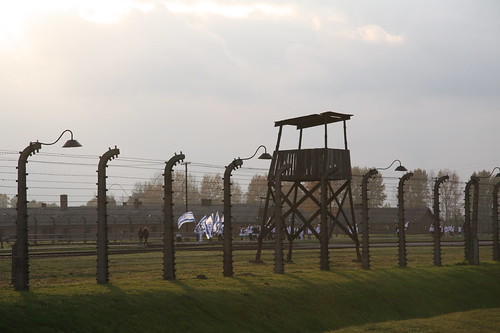
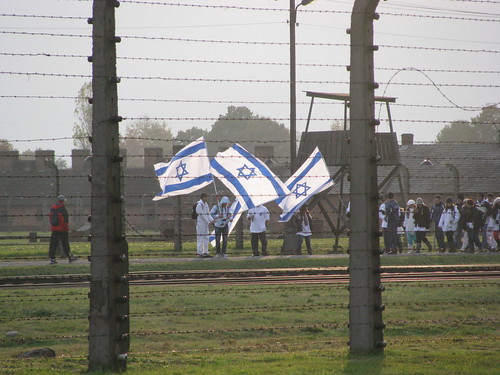
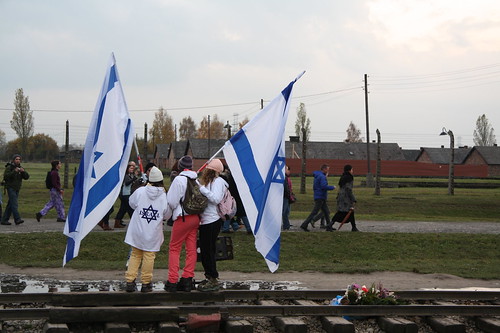



Photo credits: Rob and Jgirl14
Tags: 2008/09, history, justice, postcard: Poland, weather




Santayana’s quote is very sobering
Unbelievably, there are those today who deny that this ever took place. Some who make a living on the lecture circuit, proclaiming the Hollacaust as just a propoganda exercise.
Hatred and Blind Predjudice are alive and well in this enlightened age
A tough lesson for the older kids
It’s a frightening place, isn’t it? I wrote a post about it as well, about a month ago: http://u2austen.blogspot.com/2009/09/europe-part-vi.html
I still don’t exactly know how to say what I felt about it when people ask me. How are you supposed to sum something like that up in a few sentences? Especially when people don’t really want to know.
Pictures really do say a lot.
Thank you for posting them.
By the way, I’m a bit skeptical about the quote. I understand the motivation behind it, but I don’t think remembering the Holocaust somehow gives us immunity from experiencing it ever again. The examples of Rwanda or Serbia and so on are the obvious ones to use here. What did the international community do then? If in New Zealand (I say NZ because both your family and I live there) something like it ever became possible it would not look the same, and whoever suggested that NZ was walking down the same road would be stigmatised as a lunatic. Not an incredibly optimistic view of history, and ironic given that I am training as a historian, but I think we need to be careful about how we appropriate the past.
A very sobering post – how did the kids cope with the visit. We opted not to take ours to a camp but found Anne Franks house a good reminder of what happened.
Wow…I felt the disquiet from looking at the photos…did the kids get a real sense of it to? I’m thinking of the littlies mainly…despite censored details?
Allie, I completely agree with you that knowledge does not equal immunity. However, (and I suspect you would agree with this), I do think that if you have an understanding of history and HAVE seen how events unfold, you surely have a greater chance of being proactive (becoming a lunatic prophet perhaps) than if you were totally unaware.
I am willing to be a lunatic. And might yet have cause to be in NZ.
As for Rwanda and Serbia, I believe we simply close our eyes to it.
Amanda and Karen, I’m glad we took the kids. We had read a few books and seen the ancient black-n-white Anne Frank movie at home….we then visited the Killing Fields in Cambodia – and were able to gauge their reactions. We believed them to be ready, and that proved to be so. Of course you could say Tgirl5 was NOT ready in that she giggled by the exhibit of thousands of pairs of spectacles – but I think that was an entirely appropriate five-year-old response as she had no idea what they represented. We just explained simply that the glasses belonged to people who had been killed and she should keep quiet to show respect for them. She obliged and ER3, who was being carried in the wrap at that stage, then kept saying over and over “Lots of people died” She, of course, does not know what death even is, but she did point out the knitted children’s clothing! Tgirl5 was the first to spot Anne Frank’s picture and point it out to everyone (we too visited the house in Amsterdam), so it was quite nice to see even younger children making their own connections. The younger boys were particularly vocal when we quizzed them the next day about what they remembered – Mboy7 recounted the roll calls that could last up to 12 hours in the freezing cold and how hard it must have been to stand still….he also remembered details from in the buildings that some of us ahd not even noticed (mind you, he is our super-observer)
All in all, it was not a bad decision to take them – I’d like to have been able to view the documentary, but felt that might be inappropriate, so we skipped that bit.
Maybe the reason I feel a bit cynical about things like this is that no matter how much people know about it, you cannot MAKE them learn lessons from it. Maybe it’s that seeing people wandering round Auschwitz posing with a grin and the V sign by that “Halt! Stoj!” sign makes me feel a little bit sick. [This was definitely the tiny minority of the visitors there but it was a memorable minority.] There’s also the fact that it is not at all clear how we should interpret the past, nor is it clear why and how this happened. People like George W. Bush used “lessons” from WW2 as an excuse to invade Iraq, which frightens me.
However, I COMPLETELY agree with you that knowing is much, much better than not knowing. And that proactiveness is more likely, once knowing.
sad, horrified, speechless….
(and agreeing with all of the above)